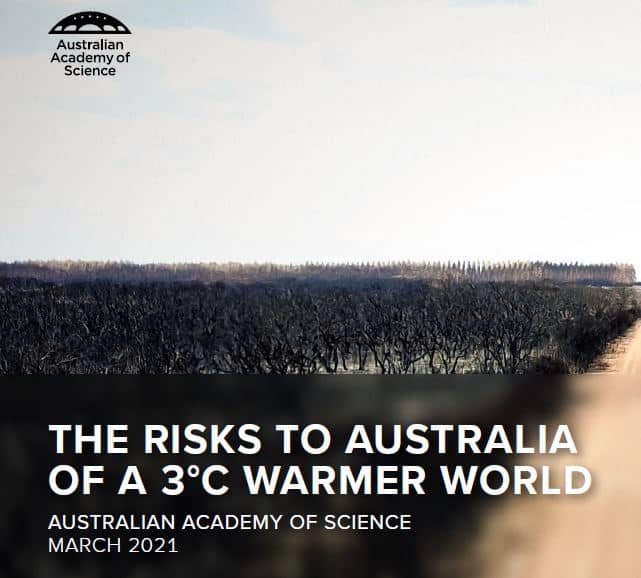A report released by the Australian Academy of Science (AAS) last week has outlined the likely state of the country in the event of 3 degrees of warming by the end of the century. This is predicated on the Paris Climate Accord failing and current emissions continuing.
The Paris Accord commits countries to keeping warming “well below 2 degrees” by the end of the century, and preferably to 1.5 degrees. Australia signed up to it under the leadership of Malcom Turnbull. However, according to the AAS, “Limiting climate change to 1.5°C is now virtually impossible.”

We have already seen a 1.1 degree increase in Australia since the late 19th century, exacerbated by land clearing, loss of indigenous land management and invasive species leading to worsening droughts and bushfires.
Beyond 2 degrees, things will only get worse. Heatwaves and extreme fire conditions will become far more common. Queenslanders can expect seven heatwaves per year (defined as three or more days over 35 degrees).
The ocean is already rising steadily, and is anticipated to be rising 10-20 mm per year by 2100 in 3 degrees of warming scenario.
The oceans will be too warm to support coral reefs. The freshwater floodplains of Kakadu Wetlands will be inundated with salt water, potentially in as little as 50 years’ time. This could return the area to what it was like 15,000 – 6,000 years ago, when indigenous rock art depicts the presence of saltwater fish species like barramundi in the area.
Flooding is expected to be two to three orders of magnitude more severe and more common than currently, boosted by a major increase in extreme rain events. Needless to say, such an untenable situation would necessitate dramatic urban adaptation on flood-prone land.
Management of flooding and sea-level risks is expected to cost several hundred billion dollars per year. The scientific authors merely note that this may be “unaffordable” for “rural and poorer areas.”
Between 150,000 and 260,000 properties coastal properties are expected to flood. Many more properties would become uninsurable; when including the risk of fire and flood, potentially over 5% of all Australian properties will be uninsurable by as soon as 2030.
The Academy’s leading take-away message was as follows: “Australia lags far behind the best practice demonstrated by many countries. Given how much Australia stands to lose if GHG [greenhouse gas] emissions are not reduced, we also recommend that Australia accelerates its transition to net zero GHG emissions over the next 10 to 20 years.”
Yet perhaps what is most notable about the Academy’s report is the way much of the statistical prediction make the changes appear incremental and manageable. What is much harder to prove or predict are the possibilities for interconnected risks potentially leading to systemic failures.
Follow Christian on Twitter for more news updates.